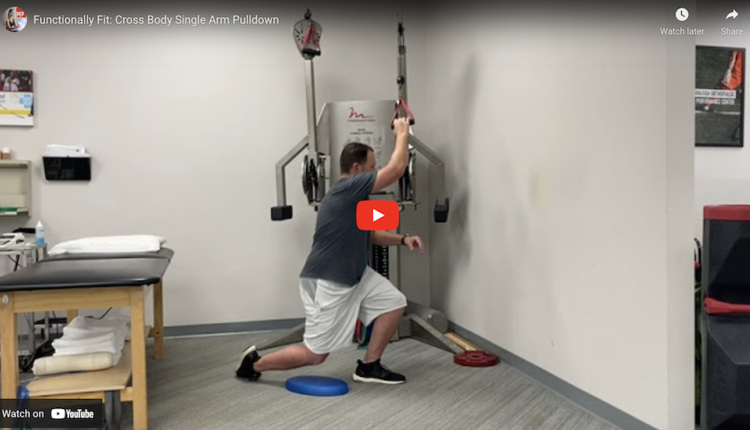
Increasing hip strength and stability is a common focus in training and injury prevention programs. Current research indicates hip and knee strengthening is more effective than knee strengthening alone in those suffering from anterior knee pain. I routinely use mini-bands to strengthen the hips and maximize proximal stability.
Application: Many clients struggle with poor proximal hip stability that shows up as excessive frontal plane adduction and compensatory trunk lean. This exercise targets the hips and closed chain control needed for those participating in jumping, running, cutting and pivoting activities. It is an excellent way to warm-up and activate the hips as well as reduce patellofemoral overload and prevent knee injuries. Progression: To increase the difficulty, you can increase the tension on the band or increase the pause time prior to returning to the start position. Regression: If this proves too challenging for the client, move the band up to a position either just below or above the knees until form is sufficient to move it back to the ankles. In addition, you may opt to perform all repetitions in one direction at a time instead of in the grid pattern to simplify the exercise. Brian Schiff, PT, OCS, CSCS, is a licensed physical therapist, respected author and fitness professional. Currently, he serves as the supervisor for Athletes' Performance at Raleigh Orthopaedic in Raleigh, NC. Brian conducts live continuing education webinars and presents nationally at professional conferences and seminars on injury prevention, rehab and sport-specific training. For more information on his products and services, visit www.BrianSchiff.com. |

















